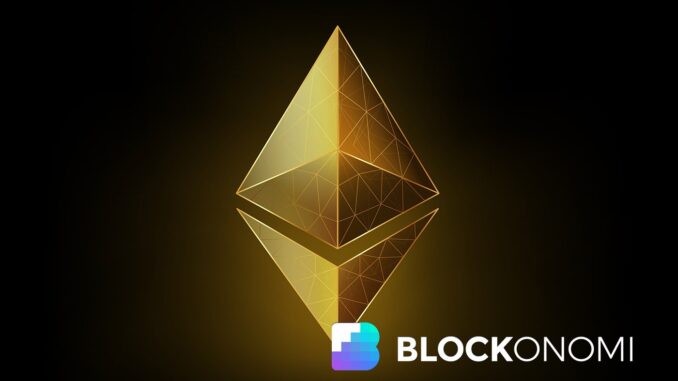
TLDR
Ethereum (ETH) price is currently struggling to stay above $1,800, down 45% in Q1 2025
ETH failed to maintain recovery above the $1,950 resistance level
Ethereum reclaimed top spot in DEX trading volume in March with $64 billion
Professional traders show little confidence in a strong ETH recovery in the near term
Despite price struggles, Ethereum remains the leader in real-world asset tokenization with 54% market share
Ethereum’s price is hovering just above the $1,800 support level after failing to maintain momentum above $1,950. The second-largest cryptocurrency has suffered a 45% decline during the first quarter of 2025, representing one of its worst quarterly performances since 2016.
The price attempted a recovery wave above $1,880 but couldn’t sustain the upward movement. ETH briefly touched $1,955 before bears pushed it back down.
Currently trading below the 100-hourly Simple Moving Average, Ethereum is facing resistance at $1,850 and $1,865. Analysts note that ETH needs to clear these levels before it can make a meaningful move toward the $2,000 mark.
On the downside, initial support sits at $1,800, with major support at $1,780. A break below could drive prices toward $1,720 or even $1,680 in the near term.
Network Metrics Show Mixed Signals
Despite price struggles, Ethereum reclaimed the top spot in decentralized exchange (DEX) trading volume in March for the first time since September 2024. Ethereum-based DEXs processed $64 billion in transactions, outperforming Solana’s $52 billion and BSC’s $44 billion.
However, the network’s fee generation has fallen dramatically. In January, Ethereum earned $142 million in transaction fees, but that figure dropped to just $21 million in March.
The burn rate has also hit its lowest level since August 2021. Last week, only 53 ETH was burned per day, and Ethereum’s total supply has grown 3% since the EIP-1559 upgrade.
This decline in network activity comes as total value locked (TVL) in Ethereum-based protocols fell from $67 billion in January to $49 billion in March.
Institutional Interest Remains Cautious
Derivatives data suggests professional traders lack confidence in ETH’s short-term performance. The premium on Ether futures relative to spot markets rose slightly to 4% on April 2, up from 2% on March 31, but remains below the neutral 5% threshold.
Options market data reinforces this sentiment. The current 7% reading on the Ether delta skew metric indicates that whales fear further downside, suggesting it may take time for traders to regain confidence.
Institutional investors have been cautious about Ethereum investments. ETH exchange-traded funds lost $403 million in March, with just one day of inflows according to SoSoValue data.
Standard Chartered analysts have reduced their year-end ETH price target from $10,000 to $4,000, citing strong competition from Ethereum’s layer-2 solutions, which offer lower fees.
The ETH perpetual funding rate has been neutral since March 31, showing that retail traders are not rushing to enter positions during the downturn.
Nevertheless, Ethereum’s long-term fundamentals remain strong. The network continues to be the leader in the tokenization of real-world assets, controlling 54% of this market with $5 billion in assets tokenized.
This sector is projected to grow to $16 trillion by 2030, according to industry forecasts. Larry Fink, BlackRock’s CEO, has emphasized tokenization’s potential, predicting that all assets will eventually be represented on-chain.
Ethereum could also benefit from staking-enabled ETH ETFs. Both the New York Stock Exchange and Chicago Board Options Exchange have filed for staking in Ethereum ETFs with the Securities and Exchange Commission.
If approved, these products could increase demand and lock away a large amount of ETH, potentially giving the cryptocurrency a boost in the longer term.
For now, the most immediate challenge for Ethereum is to break above the $1,865 resistance level. A successful move above this mark could open the path toward $1,920 and eventually $1,950.
If Ethereum clears the $1,950 resistance, it might continue rising toward the psychologically important $2,000 barrier, which would mark a key milestone in its recovery journey.






 Bitcoin
Bitcoin  Ethereum
Ethereum  Tether
Tether  XRP
XRP  Solana
Solana  USDC
USDC  Dogecoin
Dogecoin  TRON
TRON  Cardano
Cardano
Be the first to comment